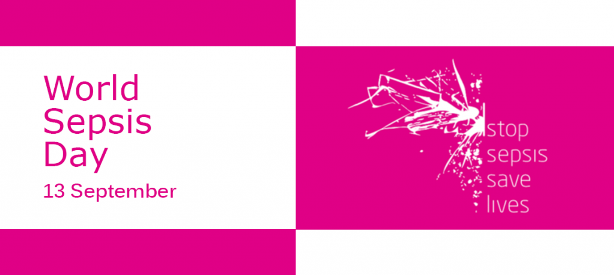
World Sepsis Day, on Thursday 13 September, offers us a chance to reflect on the progress we have made in our aim to reduce preventable harm from sepsis over the past few years. Our Patient Safety Collaborative has led the implementation of the National Early Warning Score (NEWS) across the West of England. During this time the number of deaths linked to suspicion of sepsis has dropped significantly, and the region now has the lowest rates in England.
When people become ill, they can move rapidly through a number of clinical settings. They can potentially move from the community via an ambulance to an emergency department. Many clinicians can be involved in their care. Monitoring and identifying deterioration in a patient’s condition is crucial in the fight against Sepsis.
Monitoring the numerical score generated by NEWS identifies when urgent action is required, but for NEWS to work effectively system-wide adoption is essential. This is where the networking and influencing skills of our Patient Safety Collaborative have come to the fore. As a result NEWS is used at all handovers of care across the West of England, enabling early identification of Sepsis. Here a few members of the PSC reflect on what NEWS means to them in the fight against Sepsis.
 |
“When someone is unwell, either in the surgery or on a home visit, it can be hard for me to decide how unwell that person really is, let alone communicate that to other colleagues in the chain of care. As a GP, I have found using NEWS to be an invaluable aid to supporting my clinical acumen in better ‘identifying’ and ‘prioritising’ the ‘deteriorating patient’ in front of me. I believe that using NEWS has helped me to improve the care I deliver to my patients and it provides me with added reassurance that I can better communicate with colleagues further down the chain of care on how unwell a patient is.” Dr Hein Le Roux, GP, Deputy Clinical Chair and Clinical Commissioning Lead, Gloucestershire CCG |
 |
“When I see patients in a busy surgery there are many who have an infection and for most it will be something simple which settles quickly with no treatment. However, some patients may not appear obviously unwell but in fact are very sick and may have even have sepsis; NEWS can support me in identifying this small but very vulnerable group. Once I have made a decision to admit, I am then able to use NEWS as a common language to communicate with my colleagues in the ambulance service and the hospital to ensure my patients are transferred as an emergency and treated promptly. It has been wonderful to be part of this system wide change with all clinicians working together, speaking the common language of NEWS and improving the outcomes for our patients.” Alison Tavare GP, GP Clinical Lead consultant at the West of England AHSN |
 |
“For North Bristol NHS Trust, a tertiary referral centre seeing major Trauma, Neurosurgery, Renal and Vascular Network patients from across the region, having the common language of NEWS for patients being transferred to our acute services from other hospitals, has been of particular value for safe patient care. “ Seema Srivastava, MBE, Associate Medical Director for Safe Care and Consultant in Medicine for Older People, North Bristol NHS Trust |
 |
“Implementing NEWS at University Hospitals Bristol has helped to standardise the language and the approach used in the deteriorating patient. As part of NEWS used across the whole urgent care system we are able to identify much earlier the patients that are deteriorating quickly and instigate treatment. In addition, as we have standardised the same scoring system across all the hospitals in the region, the doctors and nurses who come to work with us from other trusts are already familiar with NEWS.” Emma Redfern, Emergency Department consultant and Associate Medical Director Bristol Royal Infirmary |
 |
“Implementing NEWS in 2gether NHS Foundation Trust has helped us to prioritise physical health alongside mental health and therefore offer a safer and more holistic approach to people who use our inpatient and crisis services. With the help of the AHSN we have been able to get better at recognising when service users deteriorate physically and know when and how to act to get help in a more timely way by using NEWS. We’ve made some real progress in recognising and prioritising the physical health needs of our service users.” Sally Ashton, Programme Lead and Clinical Continuous Improvement Lead – 2Gether NHS Foundation Trust |
 |
“Utilisation of the NEWS has enhanced staff’s ability to promptly identify deterioration in patient’s physiological state especially in cases where there are no other obvious signs. Several accounts reported by staff where the use of NEWS has supported their clinical judgement to escalate care and ensure prompt treatment which would have otherwise been delayed had they not used NEWS to evidence suspicion of deterioration and sepsis. There are also accounts where the NEWS and Sepsis screening tool has detected sepsis and ensured timely treatment. Overall the utilisation of NEWS has enabled systematic and comprehensive communication about patients’ clinical situation and staff reports being empowered to escalate care through it.” Sandra Akintola, Clinical Project Lead for Bristol Community Health |
If you want to know more about our work on NEWS then click here
To see a short film about NEWS then click here
If you want to know more about World Sepsis Day then click here.
Posted on September 12, 2018


